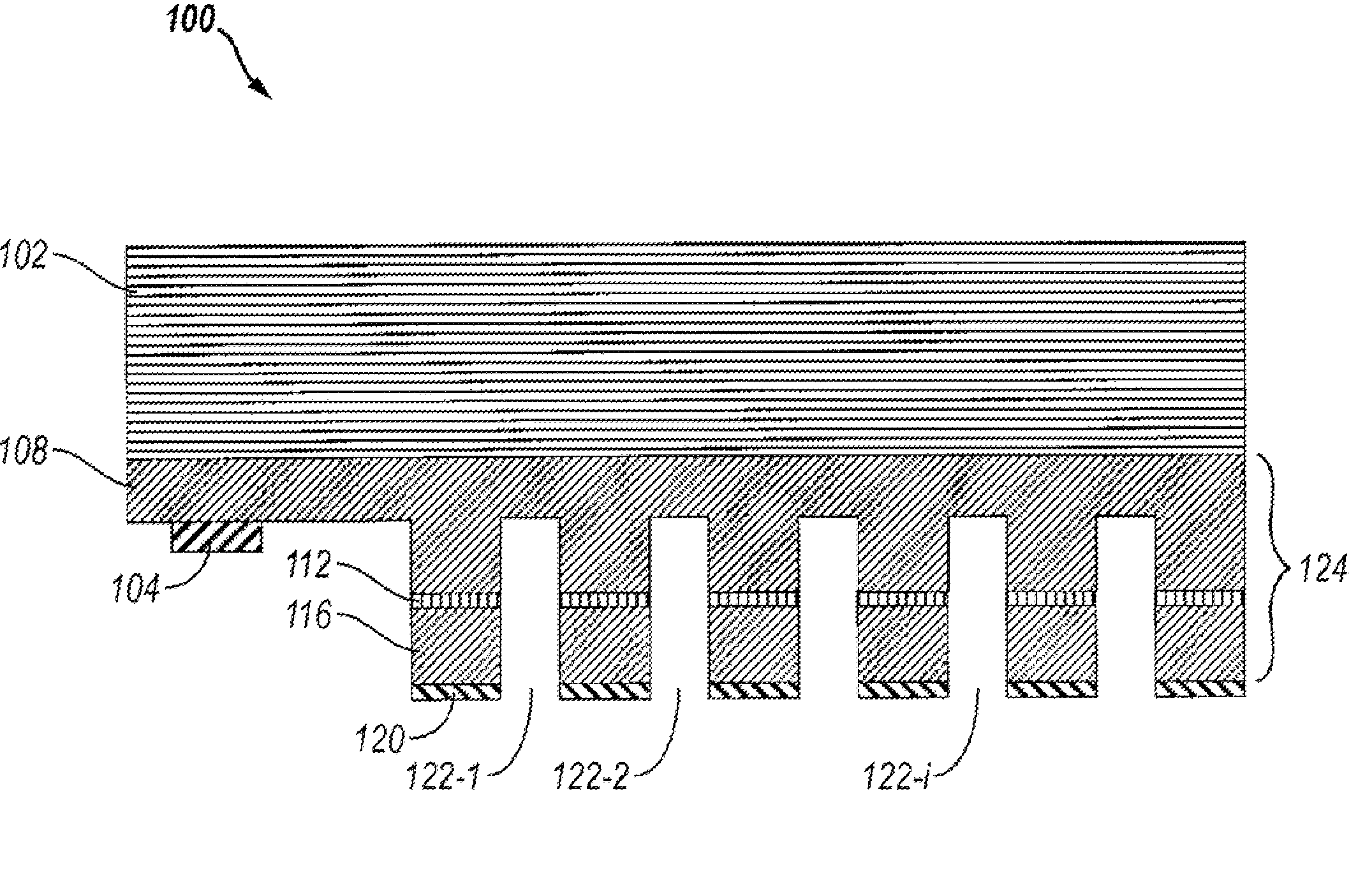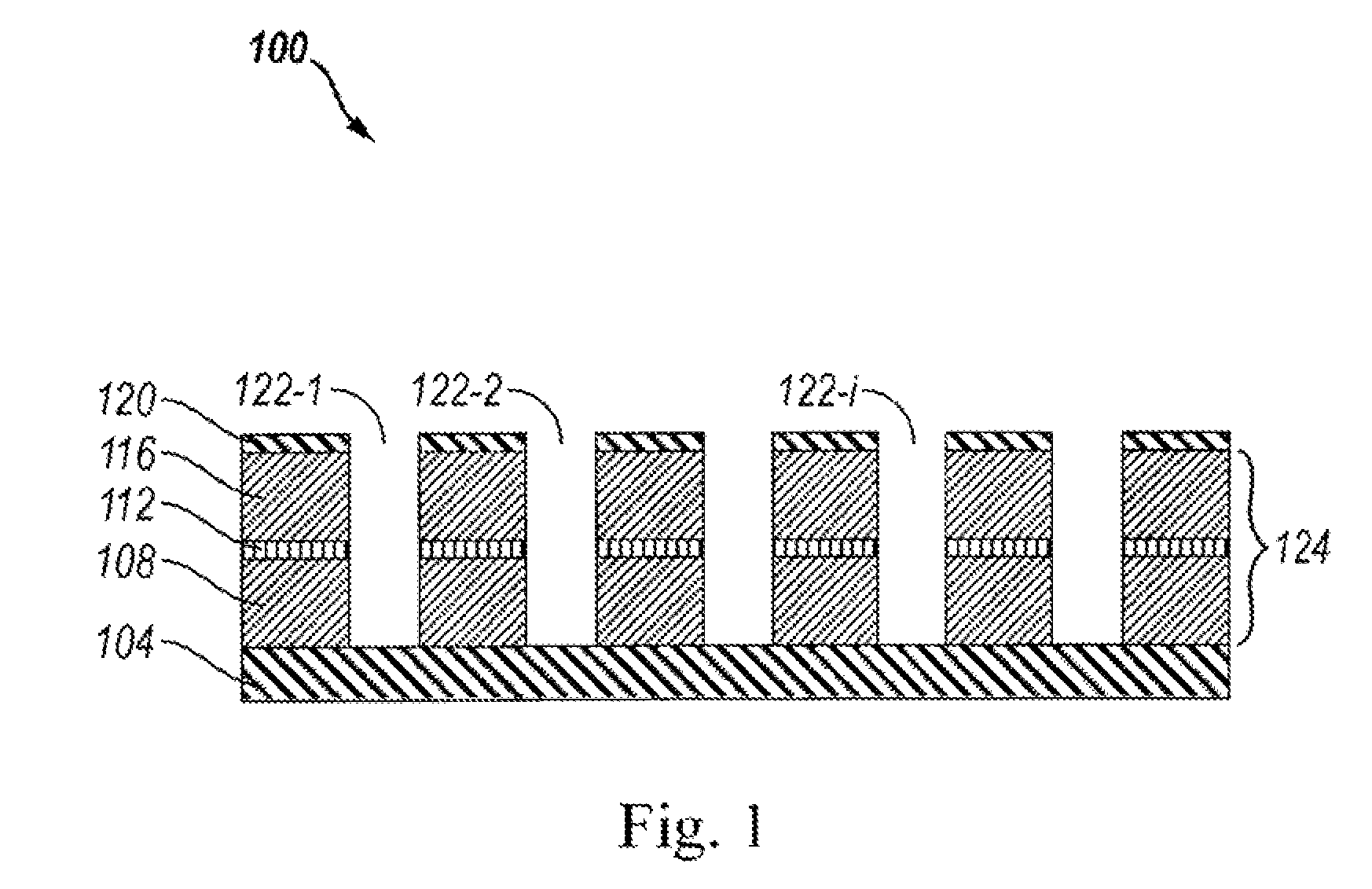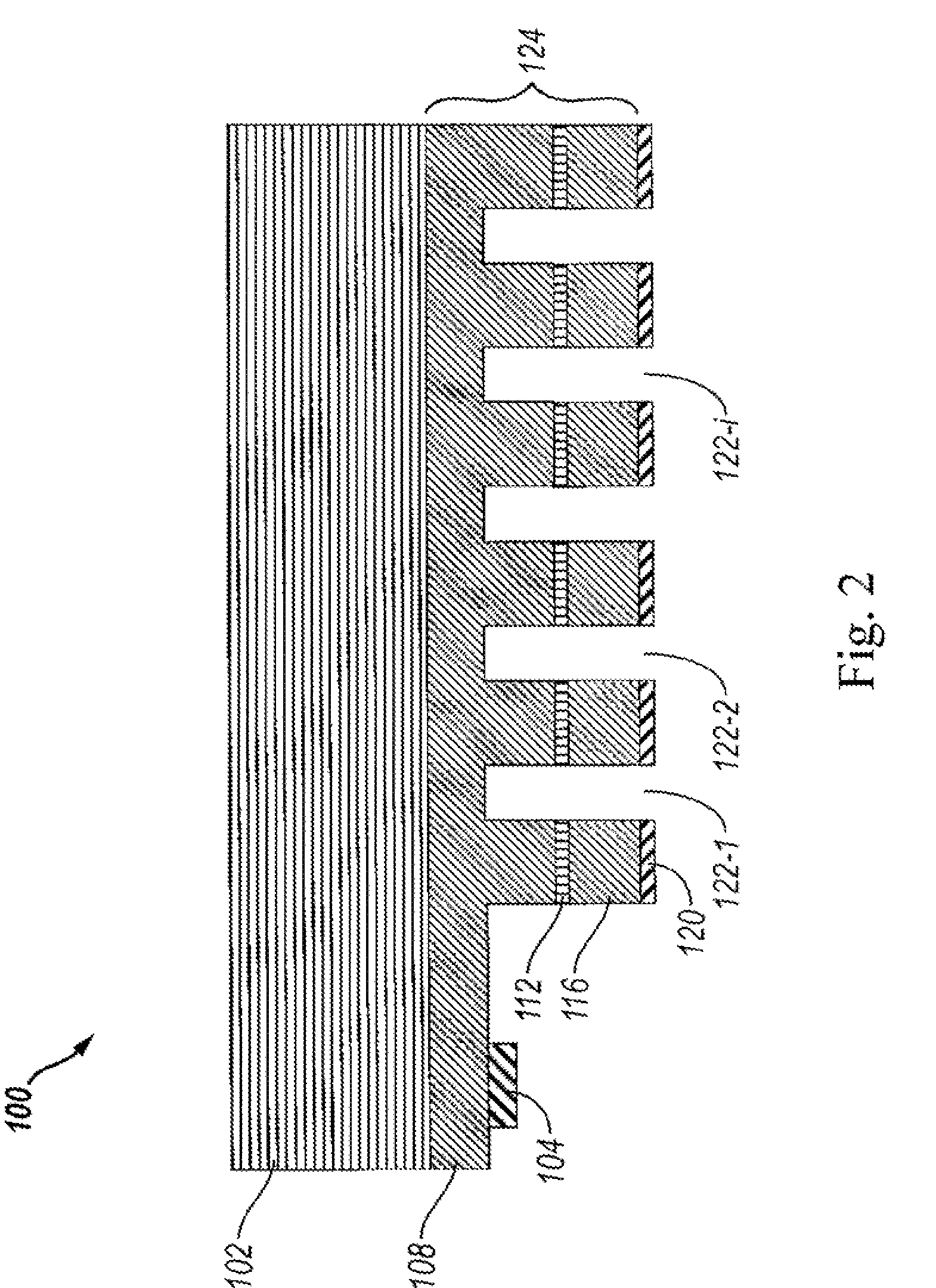LED including photonic crystal structure
a technology of photonic crystal structure and led, which is applied in the direction of basic electric elements, electrical apparatus, and semiconductor devices, can solve the problems of poor extraction efficiency, less than 30%, and limited extraction efficiency, and achieve the effect of improving the performance and reliability of pxled and low defect density
- Summary
- Abstract
- Description
- Claims
- Application Information
AI Technical Summary
Benefits of technology
Problems solved by technology
Method used
Image
Examples
Embodiment Construction
[0037]FIG. 1 illustrates an embodiment of a photonic crystal LED (“PXLED”) 100. A first electrode layer 104 is formed from a thick and substantially reflective metal. In some embodiments first electrode layer 104 also serves as a substrate. In some embodiments first electrode layer 104 can overlie a substrate. Many different metals can be used for forming first electrode layer 104, including Au, Al, Ag, and heavily doped semiconductors. An n-doped layer 108 overlies first electrode layer 104. An active layer 112 overlies n-doped layer 108. A p-doped layer 116 overlies active layer 112. Finally, a second electrode layer 120 overlies p-doped layer 116. Semiconductor layers 108, 112, and 116 are often referred to as epi-layers 124. Throughout the present application the term “layer” can refer to either a single semiconductor layer or a multi-layer structure, where the individual layers of the multi-layer differ in dopant concentration, alloy composition, or some other physical characte...
PUM
 Login to View More
Login to View More Abstract
Description
Claims
Application Information
 Login to View More
Login to View More - R&D
- Intellectual Property
- Life Sciences
- Materials
- Tech Scout
- Unparalleled Data Quality
- Higher Quality Content
- 60% Fewer Hallucinations
Browse by: Latest US Patents, China's latest patents, Technical Efficacy Thesaurus, Application Domain, Technology Topic, Popular Technical Reports.
© 2025 PatSnap. All rights reserved.Legal|Privacy policy|Modern Slavery Act Transparency Statement|Sitemap|About US| Contact US: help@patsnap.com



